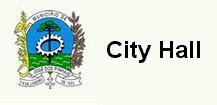Other expeditions have taken place, but more happy, and the few fields of Curitiba have been busy. The demand for gold was the main force that drove the bold and intrepid adventurers bandeirantes that permeated the ground. The gold mines of the Great Arraial are giving rise to the city of São José dos Pinhais.
In 1690, the Reverend Joao da Veiga Coutinho built in Grande Arraial a small chapel, under the invocation of the Good Lord Jesus of Pardons. The influx of people continued to the region, and in 1741, Balthazar Salvador Veloso da Silva and Albuquerque also exploited the gold mines of Arraial Grande. In the year 1775 was appointed guard-mor of the town of São Paulo José Barros Lima.
In year 1775 the village is the high class of clientele, and Grande Arraial feel the need for a new church. The old chapel of the Good Lord Jesus of Pardons was not carrying a load of time, it also served as a parish matrix, whose patron saint was San José After some time the chapel was found in a state of ruins, was then demolished and the image of saint brought to Rio de Janeiro to be red. Later another church was built. Data from the 1831 creation of the first primary school in Sao Jose dos Pinhais.
By provincial law No. 10 of 16 June 1852, the parish was elevated to the category of town, which was installed on January 8, 1853. By provincial law No 474 of April 5, 1877, sanctioned by President Joaquim Bento de Oliveira Junior, the town of São José dos Pinhais became the seat of district and is classified as the first entrance on 27 June 1878, by provincial decree law No 6983.
In 1878 was founded the core of colonial Murici, with 357 immigrants and galician Silesian Poles, and Italians from the north of that country. These families were installed in rural seventy-three lots. Another colony developed within the municipality was the Inspector Carvalho, which included 165 galician and Italian immigrants, divided into seventy-two lots. The Colony Zacharias began with 132 Polish and Italian immigrants, which is divided into twenty-six lots. It also developed the colonies Silveira da Mota, and Zaira Acioli, Santo Antonio, Father Paul, River Below, Afonso Pena, Marcelino, Ifigênia and St. Francis Xavier.
Some of emphasis, as the colonies and Inspector Muricy Carvalho had spectacular progress, but all had key role in the colonization and growth of São José dos Pinhais, giving exceptional contribution in the training portion of social, cultural and economic community. According to state law No 259 of 27 December 1897, sanctioned by Governor José Pereira dos Santos Andrade, São José dos Pinhais forums received from town. Today is one of the most important cities in the Brazilian state of Paraná, especially in the industrial area.

















